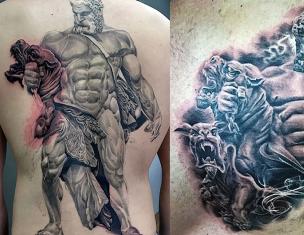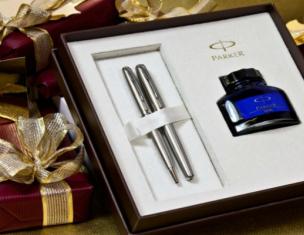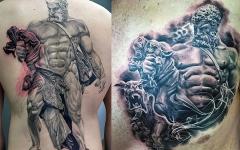A word of 7 letters, the first letter is “SH”, the second letter is “L”, the third letter is “I”, the fourth letter is “P”, the fifth letter is “N”, the sixth letter is “I”, the seventh letter is “K”, the word starting with the letter “Sh”, the last “K”. If you don’t know a word from a crossword or scanword, then our site will help you find the most difficult and unfamiliar words.
Guess the riddle:
I am shaggy, I am shaggy, I am above every hut in winter, Above the fire and the factory, Above the fire and the steamboat. But nowhere, nowhere am I without fire. Show answer>>
I'm rushing, holding on to the wires! I will never get lost. Show answer>>
I’m in a hurry for the holiday, I’m holding them by a thread: Red, yellow, blue - Floating above my head, There’s nothing better for kids than the air ones... Show answer>>
Other meanings of this word:
Did you know?
Lemmings, belonging to the family of shrew mice, are known for the fact that when their populations sharply increase, they rush en masse into the sea and die in the waves. Only this happens not because they intend to put an end to their existence (say, so that the remaining ones have more territory or food), but, so to speak, as a result of a navigational error. The fact is that lemmings, moving to new territories, often cross water barriers - rivers and lakes. Having encountered the sea on the way, they perceive it as a familiar water barrier and, without fear, go on an assault, belatedly realizing their mistake. It happens that lemmings crawl up almost inaccessible mountain slopes in search of new territories.
The Central Executive Committee and the Council of People's Commissars of the USSR decide:
- Preserve the regulatory procedure for determining income when imposing income tax on non-cooperative artisans and artisans only for those artisans and artisans without hired workers who:
a) are engaged in sewing dresses, underwear, shoes, hats, etc. to order from customer materials;
c) serve the personal and household needs of workers, such as: carpenters, joiners, painters, stove makers, roofers, plumbers, locksmiths, electricians, glaziers, chimney sweeps, floor polishers, upholsterers, water carriers, laundresses, porters, bookbinders, hairdressers, photographers , optics.
- Establish that non-cooperative handicraftsmen and artisans without hired workers (except those subject to agricultural tax), who produce products from their materials for sale on the market, are subject to income tax not according to rates of return, but according to actual income, with salaries calculated according to schedule No. 2 of rates income tax increases for these artisans and artisans by one and a half times.
- Stop issuing registration certificates to non-cooperative handicraftsmen and artisans for crafts to produce ready-made dresses, underwear, knitwear, hats from their own materials for sale on the market, leather shoes, haberdashery (including leather), saddlery leather goods and non-ferrous metal products.
- Establish that registration certificates for engaging in handicraft and handicraft trades can only be issued to persons who have the appropriate qualifications in this trade.
- Establish that workers and employees may be issued registration certificates for engaging in handicrafts and handicrafts during off-hours only for work for customers.
- For violation of the rules for registering crafts with financial authorities by non-cooperative artisans and craftsmen, establish a fine of up to 500 rubles, imposed by financial authorities.
- This resolution will come into force on January 1, 1936.
- Instruct the People's Commissariat of Finance of the USSR, in agreement with the Vsekopromsovet and the People's Commissariat of Internal Trade of the USSR, to revise current rules registration of private crafts and private small trade and submit them for approval by the Council of People's Commissars of the USSR.
- In accordance with Art. Art. 1 and 2 of this resolution to introduce the following changes into the “Regulations on personal income tax” approved by the Central Executive Committee and the Council of People's Commissars of the USSR on May 17, 1934 (C 3. USSR 1934, No. 27, Art. 211b):
a) Add Art. 21, paragraph two as follows: “When calculating the tax on the income of handicraftsmen and artisans classified in category II, with the exception of those taxed on the basis of fixed earnings standards (Article 24), the amount of tax calculated according to schedule No. 2 increases one and a half times.”
b) State Art. 23 as follows:
"23. Taxable income of payers specified in Art. 19, with the exception of handicraftsmen and artisans, taxed on the basis of fixed earnings standards (Article 24), and legal entities, is determined by financial authorities on the basis of:
a) declarations submitted by payers;
b) other information available to financial authorities about the income of individual payers.”
c) State Art. 24 as follows:
"24. The taxable income of cooperative artisans and artisans classified in category II, as well as the non-cooperative artisans and artisans listed below without hired workers, is determined on the basis of fixed earnings standards by type of craft. The standards are established by the people's commissariats of finance of union and autonomous republics that do not have regional divisions, and by the financial authorities of territories and regions in agreement with the relevant councils and unions of industrial cooperation, as well as with the relevant bodies of the People's Commissariat of Internal Trade and are published before the start of the salary year.
This procedure for determining taxable income applies to non-cooperative artisans and artisans without hired workers who:
a) are engaged in sewing dresses, underwear, shoes, hats, etc. to order from customer materials;
b) are engaged in repairing and repairing things belonging to customers;
c) serve the personal and household needs of citizens, such as: carpenters, joiners, painters, stove makers, roofers, plumbers, mechanics, electricians, glaziers, chimney sweeps, floor polishers, upholsterers, water carriers, laundresses, porters, bookbinders, hairdressers, photographers and optics."
d) State the first paragraph of Art. 27 as follows:
"27. Handicraftsmen and artisans classified in category II and taxed on the basis of fixed earnings standards (Article 24) pay tax in the following order.”
e) State the first paragraph of Art. 28 as follows:
"28. Persons engaged in small trade, non-cooperative handicraftsmen and artisans classified in category III, and those non-cooperative handicraftsmen and artisans classified in category II who are taxed at general procedure based on actual income, tax is paid in the following order.”
Chairman of the Central Executive Committee of the USSR M. Kalinin.
Deputy Chairman of the Council of People's Commissars of the USSR V. Chubar.
Secretary of the Central Executive Committee of the USSR I. Akulov.
There are a huge variety of types of headwear: hats, caps, berets, hats, etc. Hats are in demand at any time of the year, in any climate, on a variety of occasions.
Previously, headdresses served as symbolic elements of clothing (think crowns, tiaras, tiaras), which emphasized the rank of the wearer and membership in a certain group (for example, clergy).
This is due to the fact that the headdress visually elongates a person’s height (and, therefore, elevates him above other people), and is also at the level of the viewer’s gaze. It turns out that the headdress is what first of all attracts attention. In Rus', boyars often wore high caps, and women wore kokoshniks. The higher the rank, the higher the headdress. This is where the expression “Senka’s hat goes.”
Nowadays, a headdress is an accessory that serves to protect the head from weather conditions, and also emphasizes the individual style of a person. Sometimes just one original headdress is enough, and your image will sparkle with bright colors, attracting the attention of others. The main rule when choosing a headdress is to choose one in which you will look organic.
Among the many headdresses, the leader remains the hat. Hats come in a wide variety: knitted, cashmere, wool, large and fine knit, etc. Nowadays two styles are especially popular - a hat with a pom-pom and a beanie hat.
A knitted hat with a pompom is an indispensable attribute of a stylish winter wardrobe. It looks cheerful, stylish, youthful.



One more fashionable hat- beanie. This knitted hat without ties, patterns or pompoms, slightly elongated in shape. Its name comes from English word"Beanie" Initially, beanies were worn by representatives of the working class - mechanics, carpenters, welders. Now beanie is stylish accessory any fashionista.


 FUR HAT
FUR HAT 
Special mention should be made about fur hats. Fur is not only a warm material, but also a luxurious one, serving as an indicator of status. Fur hats come in a variety of shapes and styles, but earflaps, malachai and busby hats are especially popular.
Ushanka hats were worn mainly by men in the recent Soviet past. Now, without this comfortable and warm hat, it’s hard to imagine harsh frosty days. Both women and men wear earflaps, regardless of age and social status. The democratic appearance of this hat suggests wearing it with any outerwear, right down to the down jacket.
Malachai hat is fur hat with a ponytail. Malachai was previously worn by northern peoples. Gradually, malachai migrated to Asian culture, and from there it moved into European fashion. Looks good in combination with a sheepskin coat.
A busby is a fur hat that used to be part of the hussars' military uniform. Initially, the busby was very tall, but gradually its size became medium, at this time it can resemble a fur strip around the head. This hat looks very elegant and will perfectly complement your look with an expensive coat. classic cut or with a fur coat.

 HAT
HAT If you have not yet replenished your wardrobe with a beautiful hat, this is a big omission. The hat not only serves to protect the head from rain and wind, it makes the overall image more interesting and original. The most popular hat shapes are the wide-brimmed hat and the fedora. These styles have not gone out of fashion for a long time.
A wide-brimmed hat evokes mystery and mystery. Combined with large sunglasses the result is a retro look, as if from the 70s. In the autumn-winter period, such a hat can be successfully combined with a fitted coat.
A short-brimmed fedora certainly has more uses than a wide-brimmed hat. It can be worn with both a jacket and a jacket.


 SUMMER STRAW HATS
SUMMER STRAW HATS Another category of hats that should be discussed separately is summer straw hats. Such hats are usually worn on vacation. They imply a free, relaxed style. A summer straw hat will become an indispensable assistant on the beach, protecting your head from the scorching sun.


 KEPI
KEPI For those who have not yet decided on a headdress, a cap is an excellent option. This headdress is designed for experimentation.
Kepi, or the colloquial name for this headdress - cap, exists in various styles and styles: cap, coppola, baseball cap.
The cap originally appeared in France and was worn by military personnel and schoolchildren in the 19th century. The cap is made of dense material that allows it to keep its shape well.
Coppola is exactly that headpiece, which we simply call a cap. Coppola was popular with Sicilian taxi drivers; you could say it was part of their uniform. Nowadays, coppola is worn all over the world by both women and men.
Baseball cap is a sports cap. Since now the sports theme is on the crest of a wave, and things from a sports wardrobe have migrated to everyday wear, a baseball cap is worn not only with jeans and sweatpants, but also with a skirt and shoes on high heels. Don’t be afraid of bold combinations - in our time this is welcome.


 SCARF/SNUD
SCARF/SNUD Nowadays it is very fashionable to put a scarf on your head, or a snood - a hybrid of a scarf and a hat. This headdress is universal, as it goes with any clothing: from a down jacket to a fur coat. Long scarf You can wrap both your head and neck. It will protect from the wind and keep you warm on a frosty day. The main task is to choose suitable color, texture, material, size. A thin scarf can be tied on your head in the form of a turban, creating an exotic, original look.
In Rus', a person could often be called by occupation. Some forgotten and unknown professions are still found in various modern surnames.
The most common surnames of this type are - Kuznetsovs, Melnikovs, Rybakovs. But there are also less clear ones, the origin of which has been forgotten: some indicate a clear specialization and even individual stages of the technological process of past centuries.
Let's take, for example, in modern terms, textile and clothing production. The descendants of the ancient masters bear the surnames Tkachevs, Krasheninnikovs, Krasilnikovs, Sinelnikovs, Shevtsovs and Shvetsovs (from the word “shvets”, or “shevets”; Ukrainian version - Shevchenko), Kravtsovs (kravets - cutter; Ukrainian surname Kravchenko), Epaneshnikovs (epancha - clan raincoat), Shubnikovs, Rukavishnikovs, Golichnikovs (golitsy are also mittens), Skaterschikovs, Tulupnikovs, etc.
Curious surname Pustovalov. Its original root is Don word "fat", that is, a fuller of woolen bedspreads - half. This word was simplified into “postoval”, which formed the surname Postovalov. But the meaning of the word “postoval” outside the Don regions was unclear, and the surname Postovalov was rethought, or rather, made meaningless - they began to say and write Pustovalov.
The craftsman who made the “berda” (combs on looms) was called a berdnik - hence the Berdnikovs.
Leatherwork and saddlery The ancestors of the Kozhevnikovs, Kozhemyakins, Syromyatnikovs, Ovchinnikovs, Shornikovs, Rymarevs, Sedelytsikovs, and Remennikovs were engaged in this activity.
Headwear specialists were the founders of the Kolpashnikovs, Shaposhnikovs, Shapovalovs, Shlyapnikovs.
Potters, pots, skulls engaged in ceramics. However, the inhabitants of Cherepovets were also called skulls!
Cooperage products made by the ancestors of the Kadochnikovs, Bondarevs, Bocharovs, Bocharnikovs, Bochkarevs.
There is a wide range of “flour millers” and “bakers” names. These are first of all the Melnikovs, then the Miroshnikovs, Prudnikovs, Sukhomlinovs, Khlebnikovs, Kalashnikovs, Pryanishnikovs, Blinnikovs, Proskurnikovs and Prosvirins (from proskur, prosvir or prosphora - a specially shaped loaf of bread used in Orthodox worship). It is curious that the surnames Pekarev and Bulochnikov are relatively rare: both original words entered our language later, only in the 18th century.
In the surname Sveshnikov no longer everyone guesses about the original - a candle; The ancestors of the Voskoboinikovs also made candles and other products from wax.
Production and sale of oil The ancestors of not only the Maslennikovs, but also the Oleynikovs or Aleynikovs, were engaged in: oley - vegetable oil.
Hardly any of us have met medical or veterinarians. In ancient times, our ancestors treated people Lekarevs and Balievs(baliy – doctor, healer), treatment of animals - the ancestors of the Konovalovs.
Many Russian surnames are formed from various names "trading people": Prasols and Shibais traded livestock; kramari, mosols, scrupulos and peddlers - small goods; horse dealers, maklaks and lighthouses walked around the villages as buyers, bourgeois sold old clothes, etc. The surname Rastorguev speaks for itself. But the Tarkhanovs seem to be descendants of the Tatars. Meanwhile, “Tarkhan” is a word, although of Tatar origin, but at one time it was widely used in the Russian environment. Tarkhans were the name given to traveling traders, usually Muscovites and Kolomna residents, and a hundred years ago on the Volga one could hear the following song:
Is it from someone else's side?
The Tarkhans have arrived,
Moscow region merchants,
All the guys are great.
The surname Tselovalnikov is also a “trade” name. Tselovalniks were people who were engaged in the government or private sale of wine at retail. It is natural to hear the question: what does the kiss have to do with it? But here’s the thing: when receiving the right to this very profitable trade, the kissers were obliged to “kiss the cross,” swearing that they would trade honestly and give the treasury the required percentage.
But here is the most likely explanation of some other “professional” surnames:
Argunov– Argun (as Vladimir carpenters were called)
Bortnikov– Bortnik (a person engaged in forest beekeeping)
Bronnikov– Bronnik (gunsmith who makes armor)
Bulatnikov– Bulatnik (master who makes products from damask steel)
Voitov– Voight (village elder in some provinces of Tsarist Russia)
Vorotnikov– Collar (gatekeeper, gatekeeper)
Guselnikov– Guselnik (guslar)
Zhiveynov– Live cab driver (unlike a dray driver, he carried people, not loads)
Zemtsov– Zemets (beekeeper, beekeeper)
Kologrivov– Kologriv (servant at the royal horses (stood “near the mane”) or from the city of Kologriv)
Kolomiytsev– Kolomiets (in the old days in Ukraine, a worker mined salt, but may be a resident of the city of Kolomyia)
Commissioners– Commissioner (in the old days, an official who performed police functions)
Kukhmisterov– Kukhmister (keeper of the “kukhmisterskaya”, that is, the dining room)
Mechnikov– Swordsman (warrior armed with a sword)
Reznikov– Reznik (butcher who slaughters livestock)
Reshetnikov– Reshetnik (master who makes sieves)
Ruzhnikov– Ruzhnik (priest who received special allowance from the prince or parishioners)
Sopelnikov– Sopelnik (playing the sopel – an ancient pipe)
Serdyukov– Serdyuk (Cossack from the ataman’s guard)
Sotnikov– Sotnik (commander of a military unit - hundreds)
Stolnikov– Stolnik (servant at the royal table)
Syreyshchikov– Raw material buyer (buyer of raw meat)
Trubnikov– Trubnik (trumpet player)
Furmanov– Furman (cab driver)
Chumakov– Chumak (Ukrainian peasant who transported bread to the Don and brought salt and fish from there).
It should be added: “professional” surnames can also include those that originate not from the name of the profession, but also from the object of the craft itself. Thus, a hat maker could be nicknamed simply Shapka, and his descendants became Shapkins, a potter - Pot, a tanner - Skurat (which means a flap of leather), a cooper - Lagun (barrel). Other nicknames were given based on the tool of labor: a shoemaker could be called Awl, a carpenter - Ax, etc.
From literature lessons you know that likening by similarity is called metaphor, and likening by contiguity is called metonymy. Of course, separating metaphorical surnames from metonymic ones is not an easy task. After all, Barrel could be nicknamed for a fat man or a cooper, Shilom for a shoemaker or a sharp-tongued one. And if we know that, say, the founder of the Shilovs was both a shoemaker and a wit, then we just have to guess: which of these properties led to the formation of the surname. Maybe both at once.
And in conclusion, a logical question: why do surnames reflect names to such an insignificant extent? the latest professions? Yes, very simply: in the XVIII - 19th centuries specialists, as a rule, already had their own hereditary surnames and did not need new ones. Of the more or less modern surnames of this kind, the Mashinistovs are the most common. But these are hardly the descendants of the first locomotive drivers. At the end of the 18th century, a machinist was a person who services any machine, that is, a machine worker or mechanic.
Based on materials from the book Fedosyuk Yu. A. “What does your last name mean?”









